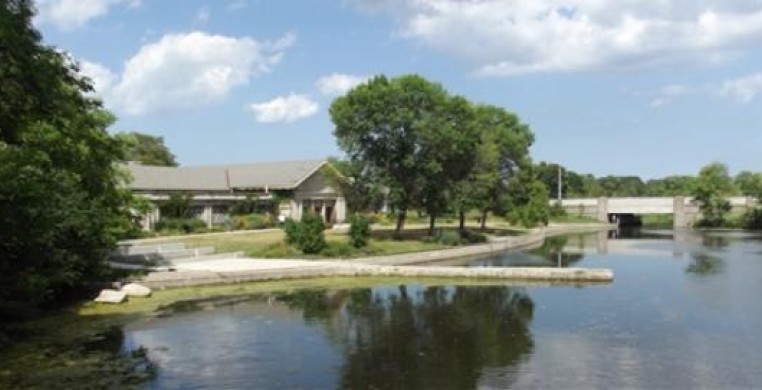Located in the Chicago Lawn neighborhood, Marquette Park totals 315.18 acres and features two gymnasiums, an auditorium, woodshop, Dr. Martin Luther King, Jr. sculpture, and multi-purpose rooms. Green features of our facility include a community garden, rose garden, prairie, and 500 newly planted trees. Outside, the park offers four multi-purpose fields, an artificial turf field, 9 hole golf course, lagoon, driving range, basketball and tennis courts, two playgrounds, baseball fields, spray pool, and the Darius Monument. Many of these spaces are available for rental including our gymnasiums, auditorium, fields, and multi-purpose rooms.
Park-goers can participate in the Park Kids after school program, seasonal sports, Therapeutic Recreation, woodshop, cheerleading, gymnastics, and Cubs Care Baseball.During the summer, youth can participate in the Chicago Park District’s popular six-week day camp.Specialty camps are offered in the summer as well, and include Cheerleading/Gymnastics Camp, and Special Recreation Night Camp.
In addition to programs, Marquette Park hosts fun special events throughout the year for the entire family such as holiday-themed events.
History
Marquette Park pays tribute to Father Jacques Marquette (1637-1675), the famous French Jesuit missionary and explorer. At more than 300 acres in size, it is the largest of the revolutionary neighborhood parks created by the South Park Commission, acquisition began in 1878. Superintendent J. Frank Foster conceived the new parks as beautifully landscaped "breathing spaces" that would provide educational and social services to the city's congested immigrant neighborhoods. Nationally renowned landscape architects the Olmsted Brothers created plans for the entire system of 14 new parks in 1903. The firm's impressive scheme for Marquette Park included a golf course on two islands surrounded by naturalistic lagoons; indoor and outdoor gymnasiums; swimming and wading pools; a children's playground; formal gardens; and a concert grove. Although the first 10 neighborhood parks opened to the public in 1905, due to drainage problems and the site's large size, Marquette Park's improvements occurred slowly, often deviating from the original plan. Two of the park's earliest features were its 18-hole golf course and a nursery of nearly 90,000 trees and shrubs. The commissioners soon began converting existing frame houses and out-buildings on the site to park uses such as a warming shelter for skaters and a small fieldhouse. By 1917, the park included playing fields, a children's playground, tennis courts, propagating houses for the nursery, and a large, classically-designed golf shelter. In 1934, Marquette Park became part of the Chicago Park District when the city's 22 park commissions were consolidated into a single agency. In 1935, the CPD Board of Commissioners authorized the reduction of the golf course from 18 holes to 9 holes allowing acreage to be released for the conversion of other recreational facilities. Additionally, through the use of federal relief funds, the park district soon converted the golf shelter into a more substantial fieldhouse, and built comfort stations, and a series of footbridges leading to the islands. Through public subscription in 1935, an Art Deco-style monument commemorating Lithuanian-American aviators Darius and Girenas was installed in Marquette Park.
For directions using public transportation visit www.transitchicago.com.

